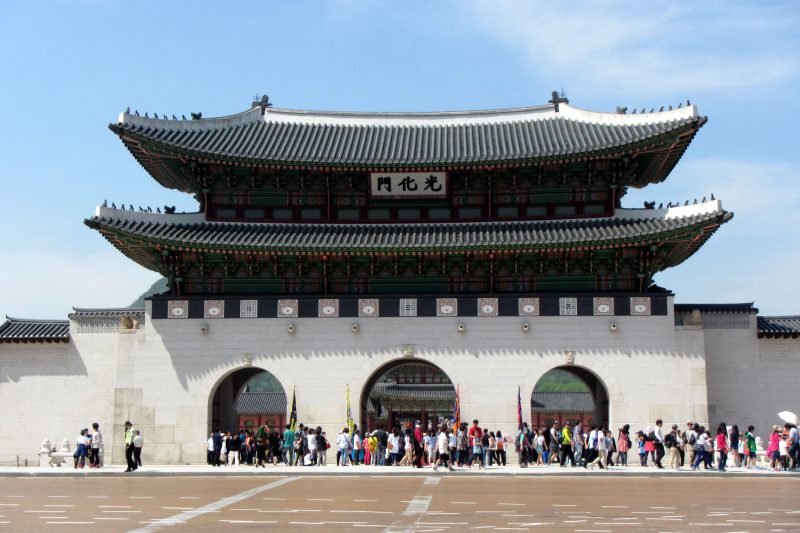A Historic Landmark: Gwanghwamun Gate
Welcome to Gwanghwamun Gate, a historic landmark that embodies the rich cultural heritage of South Korea. As the southern gate of Gyeongbokgung Palace, Gwanghwamun Gate holds great significance in the history of the Joseon dynasty. Let me guide you through the fascinating history and architectural marvels of this remarkable tourist destination.
A Symbol of Royalty and Power
Gwanghwamun Gate, built in 1395, served as the main entrance to Gyeongbokgung Palace, reflecting the grandeur and splendor of the royal court. This majestic gate was designed with three arched entrances, with the central gate exclusively reserved for the king’s use. The gate tower, perched atop sturdy granite walls, once overlooked the bustling city, making it an iconic symbol of royalty and power.
A Journey Through Time
Throughout its existence, Gwanghwamun Gate has withstood the tests of time, enduring damages and undergoing multiple restorations. It suffered severe destruction during the Imjin War in the late 16th century and remained in ruins until the reconstruction of Gyeongbokgung Palace in 1864. Unfortunately, during the Japanese occupation, the gate was relocated and ultimately faced significant damage during the Korean War.
In 1968, Gwanghwamun Gate was brought back to its original location but reconstructed using concrete. However, it wasn’t until 2006 when a major restoration project began, aimed at returning the gate to its former glory. The gate’s structure was meticulously disassembled and replaced with authentic materials such as granite and wood. After three years and eight months of painstaking work, Gwanghwamun Gate was reopened to the public on August 15, 2010.
How to Get There
- Subway: You can easily reach Gwanghwamun Gate via the Seoul Subway system. City Hall Station (Seoul Subway Line 1 & 2), Gyeongbokgung Station (Seoul Subway Line 3), and Gwanghwamun Station (Seoul Subway Line 5) are the closest stations. Simply take Exit 3 from City Hall Station, Exit 6 or 7 from Gyeongbokgung Station, or Exit 1, 2, or 8 from Gwanghwamun Station. The gate is conveniently connected through the underground exit.
- Bus: If you prefer to take the bus, several routes will bring you to Gwanghwamun Gate. Look out for Red Bus numbers 5500-2, 9602, 9706, 9708, and 9713, Blue Bus numbers 103, 150, 401, 402, 406, 408, 607, and 704, Green Bus numbers 0212, 1711, 7016, 7018, 7022, and 8000, or Village Bus routes Jongno 09 and Jongno 11.
Prepare yourself for an unforgettable journey back in time as you explore the grandeur and historical significance of Gwanghwamun Gate. From its magnificent architecture to its resilient restoration, this iconic landmark offers a glimpse into the remarkable heritage of South Korea’s past. Come and experience the majesty of Gwanghwamun Gate for yourself!

